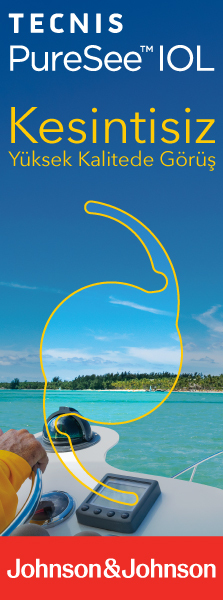TJ-CEO
2008 , Vol 3 , Num 3
Our Surgical Approach to Pedıatric Cataracts and Short Term Outcomes
1Mersin Üniversitesi Tıp Fakültesi Hastanesi, Göz Hast. A.D., Mersin, Yard. Doç. Dr.2Mersin Üniversitesi Tıp Fakültesi Hastanesi, Göz Hast. A.D., Mersin, Araş. Gör. Dr.
3Mersin Üniversitesi Tıp Fakültesi Hastanesi, Göz Hast. A.D., Mersin, Doç. Dr. Purpose: To evaluate the surgical approach and short term outcomes of the pediatric cataract surgery in our clinic.
Materials and Methods: We analyzed the clinical features, surgical technique and complications of pediatric cataract patients records retrospectively who underwent surgery between January 2005 and August 2007 in our clinic.
Results: Sixty two eyes of 39 patients were enrolled in the study. Cataract was unilateral in 16 and bilateral in 23 patients. Patients were grouped according to age as group1 (younger than 24 months old, 28 eyes), group 2 (24-60 months old, 10 eyes) and group 3 (older than 60 months old, 24 eyes). Lens aspiration with posterior capsulotomy and anterior vitrectomy was performed in all eyes in group 1 and 2, and in 10 eyes in group 3. Foldable hydrofobic acrylic intraocular lens (IOL) was primarily implanted in all eyes older than 24 months (total 34 eyes). Silicone contact lens for unilateral and spectacles for bilateral aphakic patients (group 1) were prescribed. During the follow up of 12.5±6.8 months (6-26 mo.), posterior capsule opacification (6.4%), secondary membrane formation (9.6%), pupillary irregularity (6.4%), IOL decentralisation (4.8%) and glaucoma (1.6%) was detected as postoperative complications. In patients who were available to visual acuity testing, best corrected visual acuity was improved significantly.
Conclusıon: Pediatric cataract surgery can frequently be complicated. We think advances in surgical technique, IOL features and aphakic rehabilitation methods will improve both short and long term functional and technical outcomes. Keywords : Pediatric cataract, surgical treatment, complication





